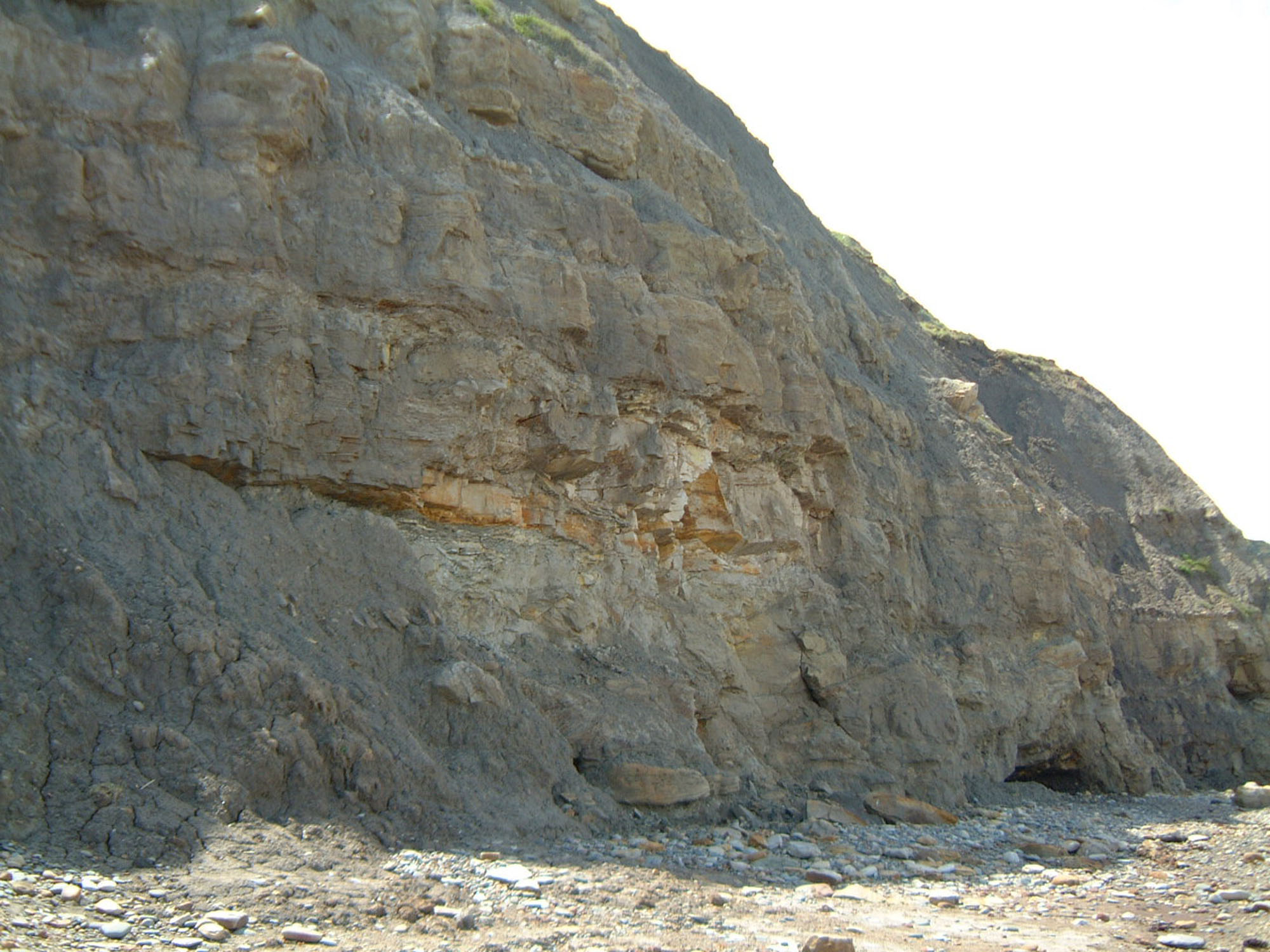This is a very good location if you are into plant remains. The Gristhorpe Plant Bed yields some of the best specimens in Yorkshire. There is a wide variety of plants too, but ammonites and shells can also be found at this location.
DIRECTIONS
♦ Gristhorpe can be accessed from the A165 heading towards Yons Nab. This is a narrow lane just south of the holiday camp and just north of Lebberston.
♦ A footpath will then lead along the cliff top and onto the foreshore at Yons Nab. From here walk in a southeast direction.
♦ Ref: 54.23106°N, 0.32967°W
PROFILE INFO
FIND FREQUENCY: ♦♦♦ – Gristhorpe Bay yields excellent plant remains, but you will have to work for them. Be sure to take a hammer and chisels to split the beds.
CHILDREN: ♦ – Although easy to access, this location has a rocky foreshore and so may not be suitable for young children.
ACCESS: ♦♦♦ – Parking is at the end of a narrow lane, so ensure you park carefully.
TYPE: – Most of the fossils can be found within the boulders on the foreshore.
FOSSIL HUNTING
If you are interested in the plant bed at Gristhorpe Bay, you will need to go to the north side of Yons Nab. Here, both cliff and foreshore exposures yield a wide range of plant fossils. Ammonites, these can be found mostly by searching the foreshore around the centre of the bay. Look for both nodules and also ammonites within foreshore boulders and beds. At the centre of Gristhorpe Bay, blocks of Oxford Clay yield ammonites (Parawedekindia arduennensis and Cardioceras praecordatum). Within a pale grey limestone of the Hackness Rock Member, the ammonites, Kosmoceras spinosum and Quenstedtoceras, can be found.
GEOLOGY
At the centre of Gristhorpe Bay, the Cornbrash (Bathonian/Callovian) and Osgodby Formation (Callovian age) can be seen, along with a small sequence of Scalby Formation siltstones (Bathonian) and Oxford Clay.
Walking north, exposures of the Scarborough Formation (Bathonian) can be examined in the cliffs.
At Horse Shoe Rocks, north of Gristhorpe Bay, the Yons Nab Beds run across the foreshore, and calcareous sandstone and oolitic limestone can be seen at very low tides.
Further north still, towards and near Yons Nab, the silts of the Helwath Beck Member rest on carbonaceous shale and below this, the Gristhorpe Plant Bed can be seen.


SAFETY
Common sense when collecting at all locations should be used and knowledge of tide times is essential. This part of the coastline is very dangerous as a result of the tidal conditions, so make sure you return before the tide turns. Keep away from the base of the cliffs, as rock falls are very common. Hard hats are recommended.
ACCESS RIGHTS
This site is a site of special scientific interest (SSSI). This means you can visit the site, but hammering the bedrock is not permitted. For full information about the reasons for the status of the site and restrictions, download the PDF from Natural England.
EQUIPMENT
A Hammer and splitting chisel are recommended at this location. A pick will also come in handy. Suitable footwear should also be worn. Any fossils should be wrapped well and placed carefully into containers, try not to rub fossils and treat as soon as possible.
It is important to follow our ‘Code of Conduct’ when collecting fossils or visiting any site. Please also read our ‘Terms and Conditions‘
LINKS
♦ Buy Fossils, Crystals, Tools
♦ Location Discussions
♦ Deposits Magazine
♦ Join Fossil Hunts
♦ UK Fossils Network

































